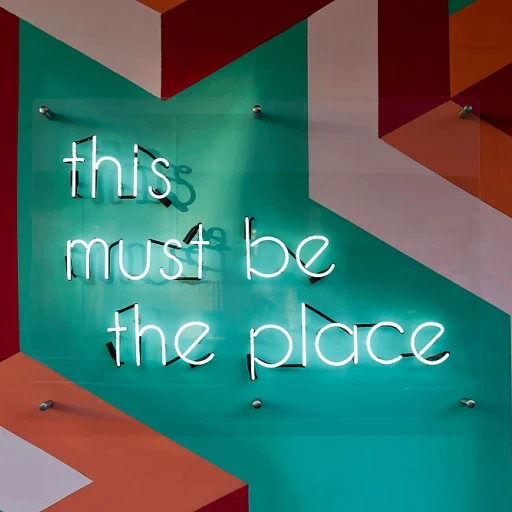Understanding Thought Keys in Corporate Culture
Decoding the Fundamental Building Blocks
The concept of "thought keys" in corporate culture is crucial for fostering a positive environment within any organization. At its core, these keys refer to the cognitive frameworks and mental strategies that organizations develop to improve thinking and learning. They're akin to the revolutionary educational tools like 'thinking hats' or 'choice boards,' which are employed in schools to enhance students' critical and creative thinking skills. Similarly, in the corporate world, these keys are vital for empowering employees to become free thinkers and problem solvers.
Organizations have increasingly recognized the importance of these frameworks, much like Bloom's Taxonomy in educational settings that help in structuring educational goals and activities. When applied in a business context, they can deeply influence how critical and creative thinking permeates various processes.
The corporate landscape is replete with challenges that require an innovative approach to problem solving. Companies strive to develop thought keys that enable employees to tackle these challenges creatively and critically. This aligns with the higher-order skills that were initially developed in educational settings to promote deeper student engagement.
Critical thinkers in an organization contribute to creating a culture where new ideas are not just encouraged but are essential. These thinkers help ensure that employees are not just performing tasks but actively contributing to a dynamic and evolving corporate ethos. In subsequent discussions, we'll explore how leadership plays a pivotal role in firmly establishing these thought keys and empowering employees to harness them effectively.
The Role of Leadership in Shaping Thought Keys
Leadership: The Heartbeat of Corporate Thought Dynamics
The role of leadership in shaping the keys to corporate culture cannot be overstated. Leaders, often perceived as the primary movers and shakers, are pivotal in embedding the thought processes that drive corporate values and thinking skills. Their influence extends beyond mere strategic decisions; they shape the very fabric of corporate thought dynamics. Leadership is not simply about direction but about molding how critical and creative thinking, akin to Bloom's Taxonomy and thinking hats, is integrated into daily activities.
Leaders set the tone for a company's culture, promoting an environment where free thinkers can thrive. By fostering a culture that values education, skills development, and innovative ideas, leaders create an organizational atmosphere where critical and creative thinking becomes second nature to employees. This aligns seamlessly with the notion of critical creative thinkers exploring various perspectives and innovative solutions to propel the company forward.
A well-rounded leader understands the importance of activities that engage employees on multiple levels. For instance, choice boards and problem-solving exercises, inspired by thinker keys and activities created in educational settings, can be adapted into the corporate environment to promote higher order thinking skills. These activities grant employees the opportunity to take ownership of their learning and thinking processes, much like students in an advanced school setting.
Moreover, the most successful leaders prioritize feedback and continuous learning. Regular reviews and communication sessions ensure that employees' perspectives are acknowledged and integrated into the broader organizational strategy. Such engagement initiatives, emphasizing critical and creative thinking, empower employees to contribute meaningfully to corporate success.
Ultimately, the influence of leadership on the thought keys within a corporation is profound. By championing a culture that encourages students' thinking, adapted to the corporate realm, leaders can effectively leverage the full potential of their teams. To delve deeper into the transformative impact of effective leadership in corporate culture, visit our detailed discussion on mastering priority management in corporate culture for insights on aligning priorities with cultural goals.
Employee Empowerment Through Thought Keys
Employee Empowerment Through Innovative Thinking Approaches
When evaluating the essence of a flourishing corporate culture, the empowerment of employees through well-structured thought keys is paramount. These keys, setting stages for both critical and creative thinking, pave the way for sound problem-solving and innovative outcomes within organizations. In the evolving business landscape, empowering employees involves the integration of various thinking models like thinking skills and thinking hats. These models encourage employees to tap into a wide spectrum of cognitive capabilities, enabling superior problem-solving and decision-making processes. Through critical creative approaches, employees are encouraged to question, analyze, and reimagine their roles within the corporate hierarchy, leading to enriched learning experiences. Choice boards and Bloom’s Taxonomy offer tools to foster a deeper understanding of complex issues, thus facilitating higher-order thinking among employees. These approaches encourage students thinking—not in a traditional school setting—but within their professional realms to expand their cognitive boundaries. Emphasizing thinkers keys and thought keys developed through robust frameworks creates a culture of free thinkers, where each individual is empowered to contribute novel ideas. Moreover, companies investing in the critical exploration of language and communication hold a competitive edge. Incorporating language skills into training sessions ensures that employees are not only thinkers but communicative actors, capable of aligning their ideas with corporate strategies effectively. By instilling a culture that promotes continuous learning and the development of innovative thinking skills, organizations not only enhance employee engagement but also drive success. This strategy ultimately reflects a corporate culture poised for adaptability and resilience. For more insights into how corporate culture actively empowers employees, especially through unique business strategies and innovations, consider looking into real-life examples of effective corporate cultures.Challenges in Aligning Thought Keys Across Diverse Teams
Diverse Mindsets and Collaborative Synergy
Cultivating a unified corporate culture in diverse teams presents its own set of challenges, particularly when trying to align varied thought keys. Understanding these nuances is essential in order to harmonize the collective mindset and maintain robust collaboration. Balancing distinct thinking styles can be complex, as each individual brings their own unique approach to problem solving and creative thinking. Employees often draw from a range of education backgrounds and experiences, classifying their thinking skills similarly to Bloom's taxonomy, where critical and creative thinking emerges distinctly.- Language and Communication Barriers: Diverse teams may experience difficulties in communication, affecting their ability to convey ideas effectively. Ensuring that the language used within the organization is inclusive and accessible is vital for successful collaboration.
- Creativity and Innovation: Diverse teams offer a wealth of creative ideas. Tapping into these resources requires fostering an environment where free thinkers can thrive, using strategic tools like thinking hats and choice boards to welcome a broader range of questions and solutions.
- Cultural Sensitivity: Culture is deeply rooted in individuals' ways of thinking. Acknowledging and respecting these differences can pave the way for stronger teamwork and problem solving.
Measuring the Impact of Thought Keys on Corporate Success
Evaluating the Influence of Thought Keys on Business Outcomes
Measuring the impact of thought keys on corporate success is a nuanced process that requires a blend of both quantitative and qualitative approaches. These keys, which encompass critical and creative thinking, are integral to fostering a robust corporate culture. They serve as catalysts for innovation and problem-solving, helping organizations navigate complex challenges.
One way to gauge their effectiveness is through employee engagement surveys. These surveys can reveal how well thought keys are being integrated into daily activities and whether they are enhancing critical thinking and creative problem-solving skills among employees. High engagement scores often correlate with a culture that values and promotes these thinking skills.
Another method is to assess the outcomes of projects and initiatives that rely heavily on critical and creative thinking. By reviewing these projects, companies can determine if the application of thought keys has led to successful outcomes and if they have contributed to meeting strategic goals.
Additionally, organizations can look at performance metrics such as productivity rates, innovation indices, and employee retention. These metrics can provide insights into how well thought keys are being utilized and their impact on overall corporate success. A culture that encourages free thinkers and embraces tools like Bloom's Taxonomy and thinking hats can often see a marked improvement in these areas.
Ultimately, the goal is to create an environment where thought keys are not just theoretical concepts but practical tools that enhance the organization’s ability to adapt and thrive. As companies continue to evolve, the role of these keys in shaping future trends in corporate culture will become increasingly significant.
Future Trends in Thought Keys and Corporate Culture
Emerging Trends in Thought Keys
As the corporate landscape evolves, so does the approach to thought keys, integrating more sophisticated methods for fostering critical and creative thinking. The future trends in corporate culture indicate a growing emphasis on thinking skills that not only empower employees but also align with organizational goals.
Integration of Educational Techniques
Borrowing from educational frameworks, companies are increasingly adopting tools like Bloom's Taxonomy and thinking hats to structure thought processes. These methods encourage a range of thinking activities, from basic understanding to higher-order problem solving, enhancing the critical creative capabilities of employees.
Technology and Thought Keys
Technological advancements are reshaping how thought keys are developed and implemented. With the advent of AI and machine learning, organizations can now create personalized learning paths that cater to individual thinkers, much like how choice boards are used in educational settings to tailor learning experiences for students.
Focus on Diversity and Inclusion
Diverse teams bring a wealth of perspectives, making it essential to align thought keys across cultural and linguistic boundaries. Companies are investing in language skills training and inclusive practices to ensure that every employee's voice is heard, fostering a more holistic approach to corporate culture.
Continuous Learning and Development
The future of corporate culture is one where continuous learning is not just encouraged but embedded into the organizational fabric. This involves regular reviews and updates to thought keys, ensuring they remain relevant and effective in a rapidly changing world. By doing so, companies can cultivate an environment where free thinkers thrive, driving innovation and success.
In conclusion, the future of thought keys in corporate culture is one of dynamic evolution, embracing educational strategies, technological advancements, and a commitment to diversity. These elements combined will shape the way organizations think and operate, ensuring they remain competitive and forward-thinking in the years to come.








